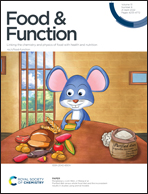Investigating the effects of supercritical antisolvent process and food models on antioxidant capacity, bioaccessibility and transepithelial transport of quercetin and rutin
Abstract
In the present study, the effects of the Supercritical Anti-Solvent (SAS) process and food models on the antioxidant capacity, bioaccessibility and transport dynamics of flavonol-loaded polyvinylpyrrolidone (PVP) based microparticles were investigated using a combined in vitro gastrointestinal digestion/Caco-2 cell culture model. SAS-processed and unprocessed flavonols were supplied in two different food models: 10% ethanol for an aqueous hydrophilic food simulant and 3% acetic acid for an acidic food simulant. The SAS processing of quercetin and rutin resulted in a much higher recovery of these bioactives as well as greater retention of antioxidant capacity after gastrointestinal digestion in both hydrophilic and acidic food models. The present study also demonstrates that SAS coprecipitation has a positive effect on the stability and transport of bioactives across the epithelial cell layer. It can be deduced from the results that the SAS process can be a useful method in pharmaceutical and nutraceutical applications with high stability, bioaccessibility, bioavailability and thus enhanced nutritional value.

- This article is part of the themed collection: Effect of food matrix & processing on the physiological fate of bioactive compounds & metabolites


 Please wait while we load your content...
Please wait while we load your content...